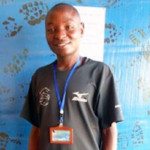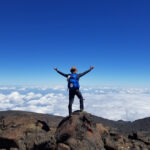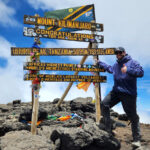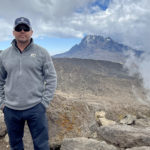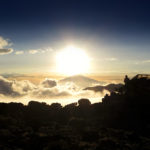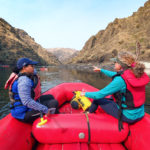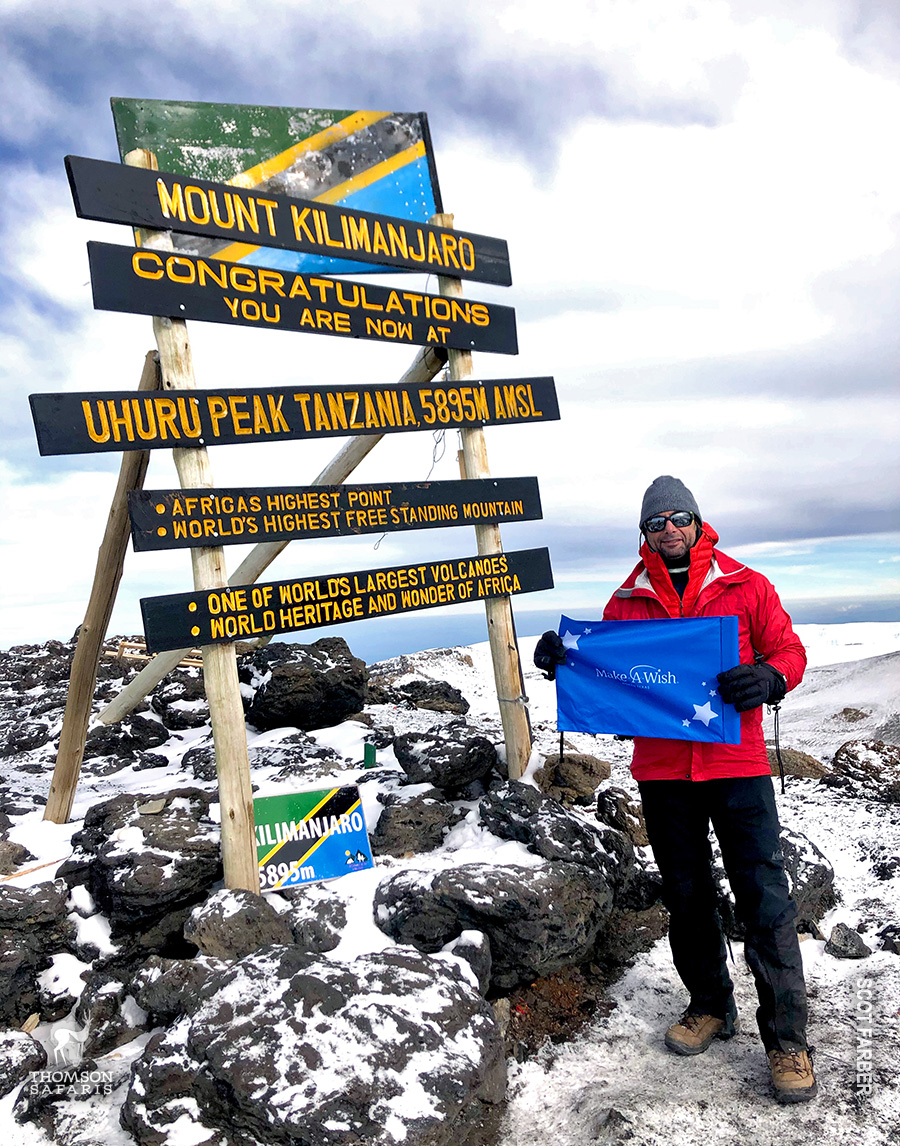
Scot Farber had never climbed a mountain. He had never hiked. Living in the flatlands of North Texas, he didn’t have opportunities for either. But for nearly 20 years, he dreamed of climbing Mount Kilimanjaro. He decided to make his dreams a reality recently, when he went to Tanzania for a week-long hike to Uhuru Peak.
So, how did Scot, with no climbing experience, take on the Roof of Africa?
For a Good Cause
From the start, Scot wanted his trek to have an impact on children who have faced challenges in the wake of the COVID-19 pandemic. He met with board members of Make-A-Wish North Texas and told them he wanted to raise one dollar for every foot he climbed on Kili – a goal of $19,341.
“They looked at me like I was crazy,” Scot said. “They were dumbfounded. And I was like, ‘No, I’m going to do this.’”
Ultimately, they approved his goal, set up a webpage, and Scot started training. He prepared a fitness plan, but knew his lack of hiking experience was going to present some challenges. Not even top-tier fitness would help if he didn’t acclimatize properly on Kili. Altitude is something you can’t train for. Everyone experiences it differently. It’s best to stay informed on what to expect when you’re on the mountain – and if you can, get some experience at high altitudes beforehand.
Training and Learning
To get some hiking experience and to see how his body handled altitude, Scot traveled from Dallas (400 feet above sea level) to Colorado, then climbed to the summit of Mt. Elbert (14,000 feet above sea level) in less than 24 hours.
The climb was a challenge. Because of the rapid altitude change, Scot had headaches. He was starting to wonder how he was going to get to the top. Scot told D Magazine,
“My mind was ready to go, but my body had to work harder than it ever has…It was like walking through molasses.”
He took his steps one at a time, and eventually reached the top of Mt. Elbert. He learned a valuable lesson from the hike: don’t overpack. Every ounce counts on the mountain. As challenging as it was, it was only the training mission – next up was the taller, tougher, week-long journey to Mount Kilimanjaro’s Uhuru Peak. Could he do it?
Seeing Kilimanjaro for the First Time
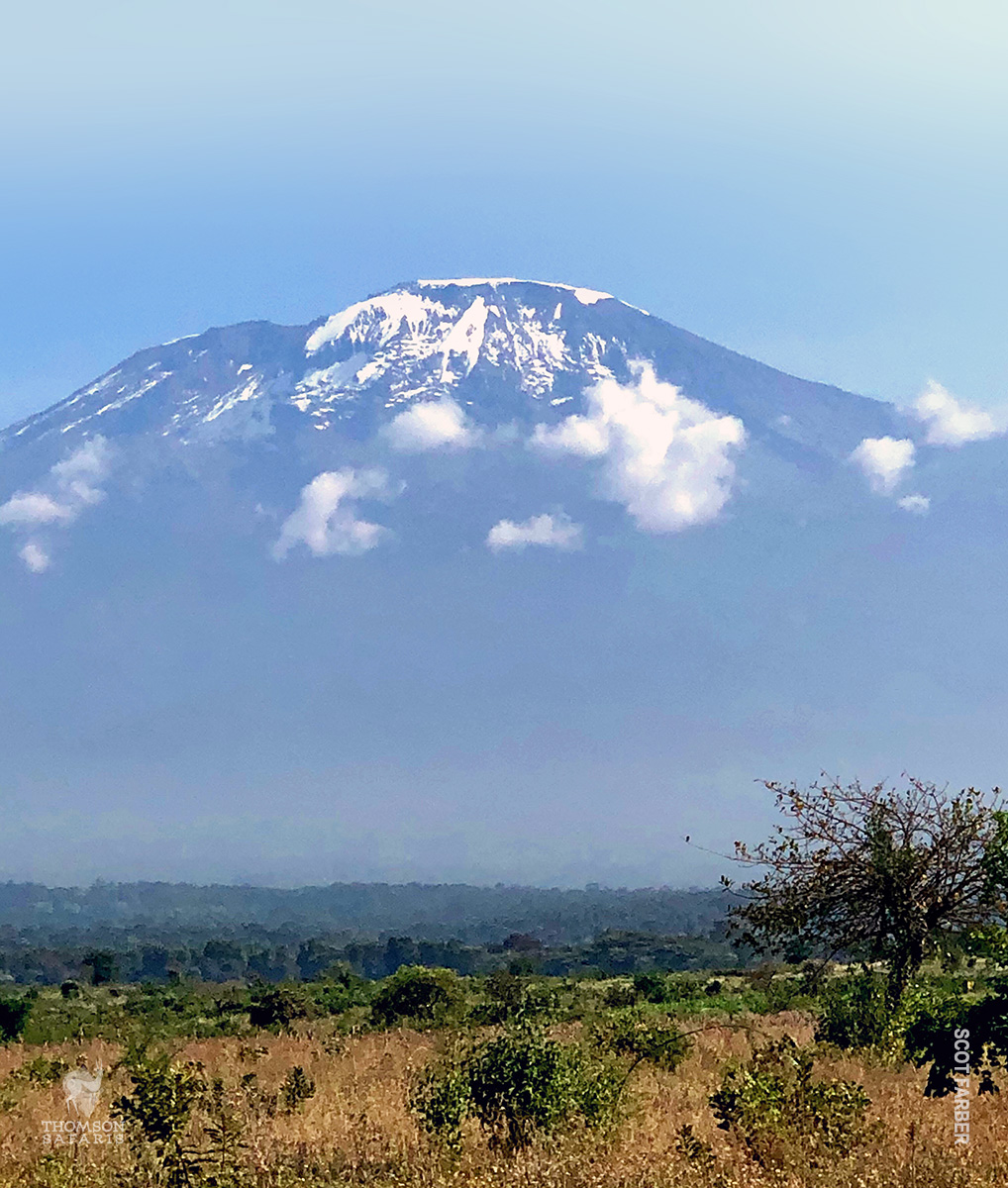
Scot said the scope of his challenge hit him as his flight came into Kilimanjaro International Airport. From the window of his plane, he saw the staggering Mount Kilimanjaro (the tallest free-standing mountain in the world) out on the horizon.
“You think about it being high, right?” Scot asked. “It’s 19,341 feet – just under 20,000 – but I really didn’t know what that meant.”
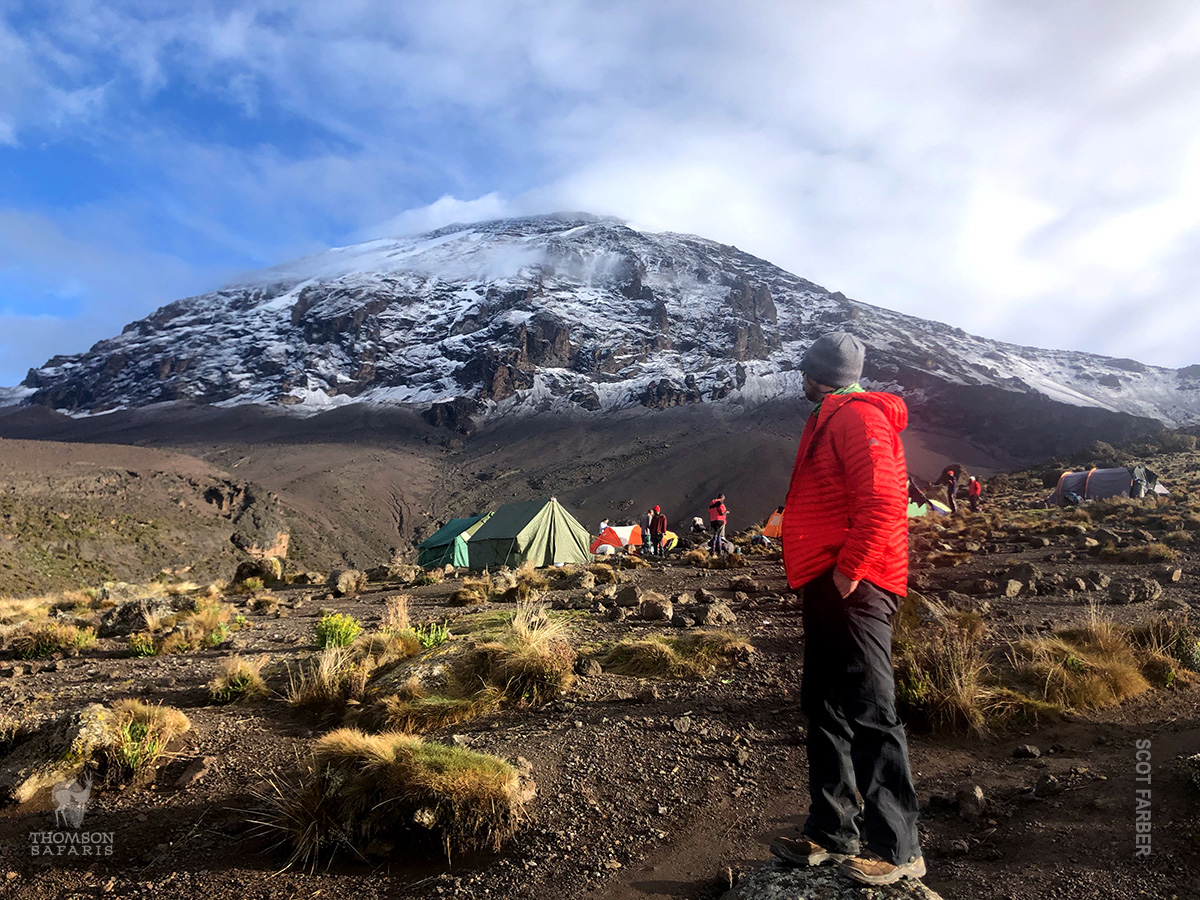
It can be overwhelming to see the imposing, awe-inspiring beauty of Kili and think, “How am I going to climb that?” But Scot was determined to make his Make-A-Wish goal come true. After months of preparation, planning and a quick photo at the park gate, Scot set out for the trek.
“Drinky, Drinky”
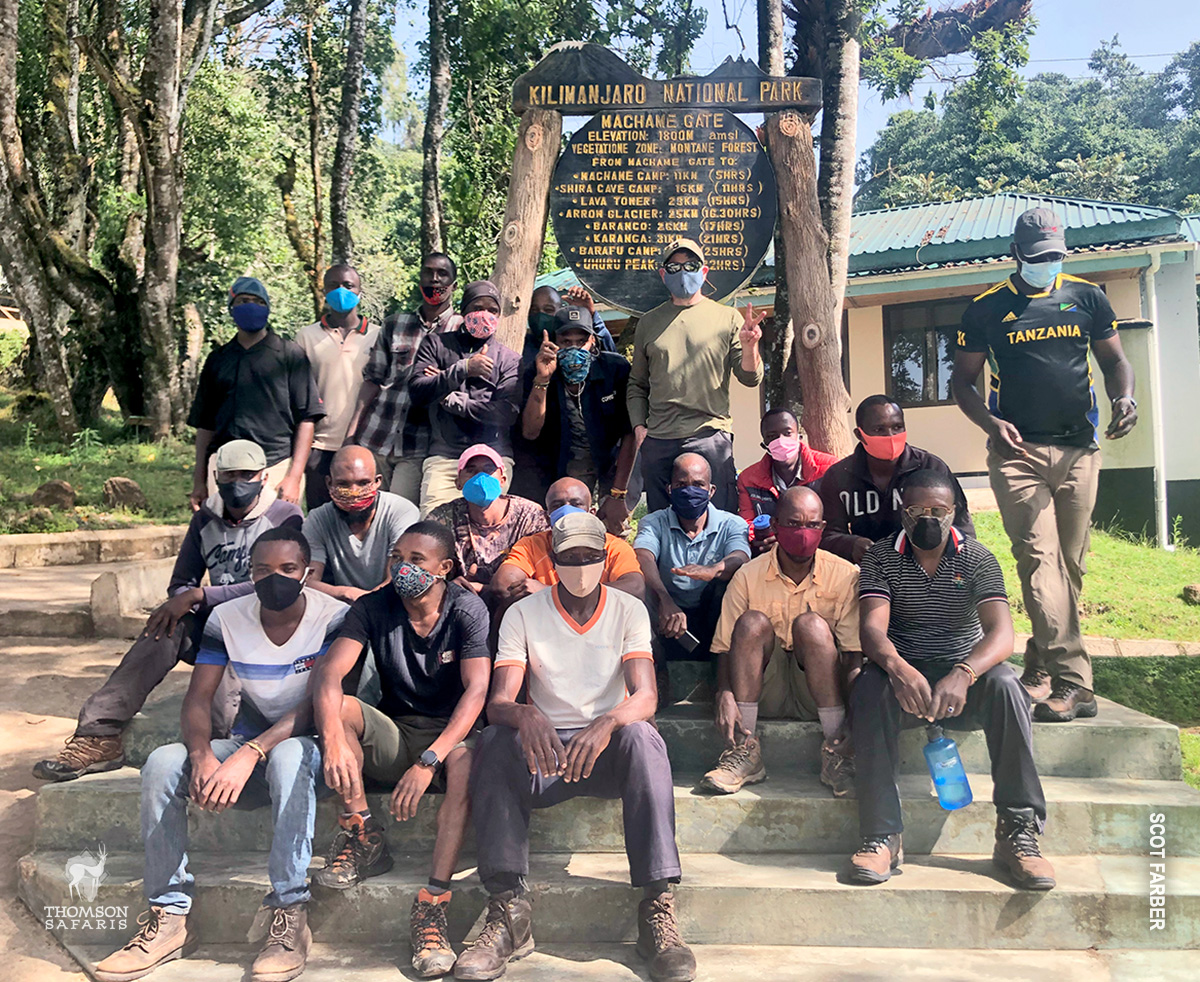
Scot trekked through rain and wet conditions for the first few days of his journey. He said he often didn’t want to look up because he would realize, “Whoa, that’s far.” But his guides were always with him to provide support, encouragement and advice. Guides on Kili say it frequently: ‘Pole pole,’ or slowly, slowly. Take it one step at a time, and you’ll get there.
Like anyone who climbs Kilimanjaro knows, trusting your guide is the most important thing you can do on the mountain. Scot’s guide, Resipicius Baitwa, had summitted Kilimanjaro more than 500 times, and was expertly aware of Scot’s individual needs and preferences.
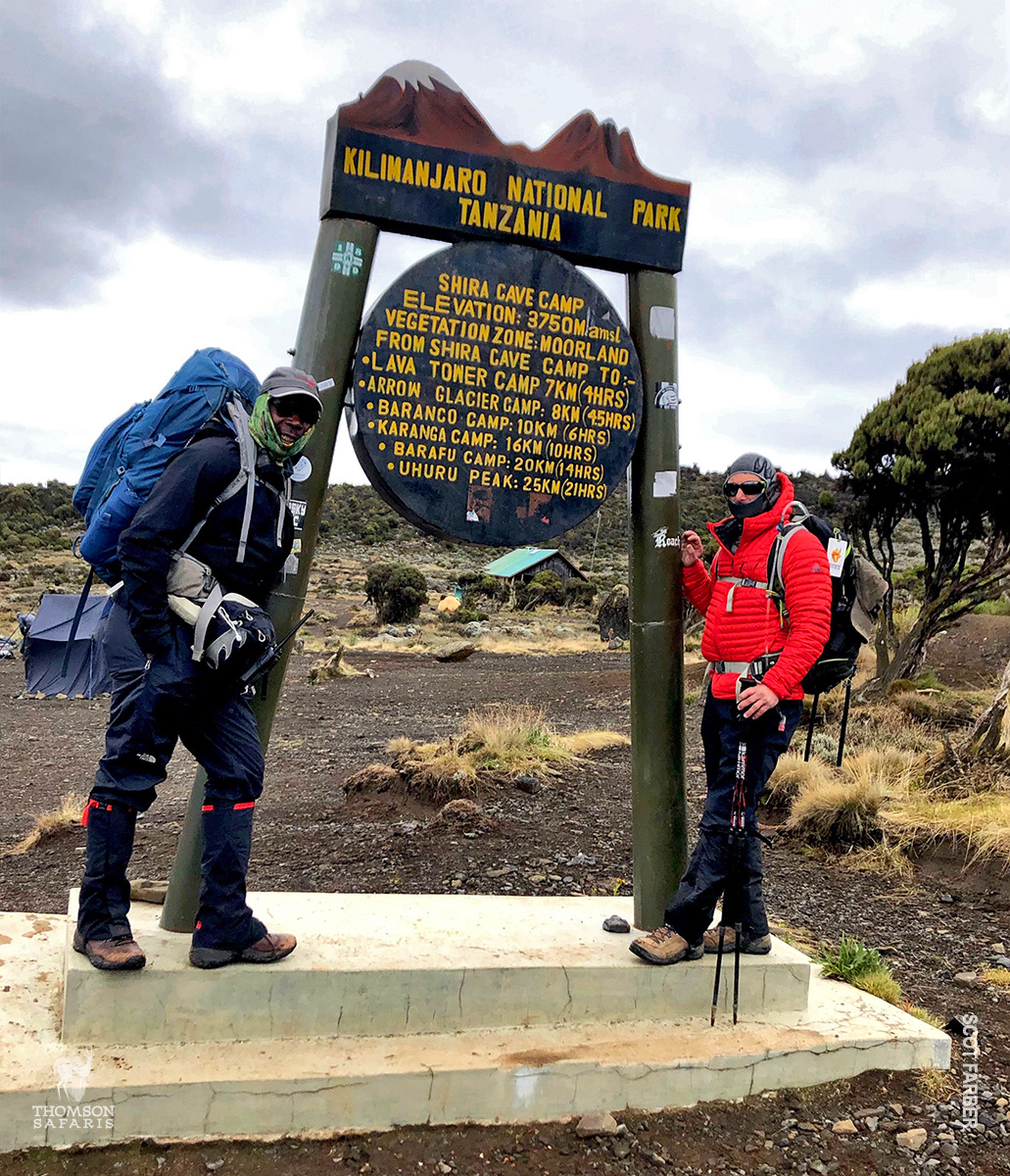
With a laugh, Scot recalled how Resipicius often said, “drinky drinky,” indicating Scot needed to stop for a water break. Resipicius made tea for him at Stella Point. He watched over Scot and made sure Scot was doing okay. They took a slow pace because going slow was working better for Scot than a more moderate pace.
“He really paid attention,” Scot said. “I was taken care of really well. It was such a comfort being with him.”
The Night Before the Summit
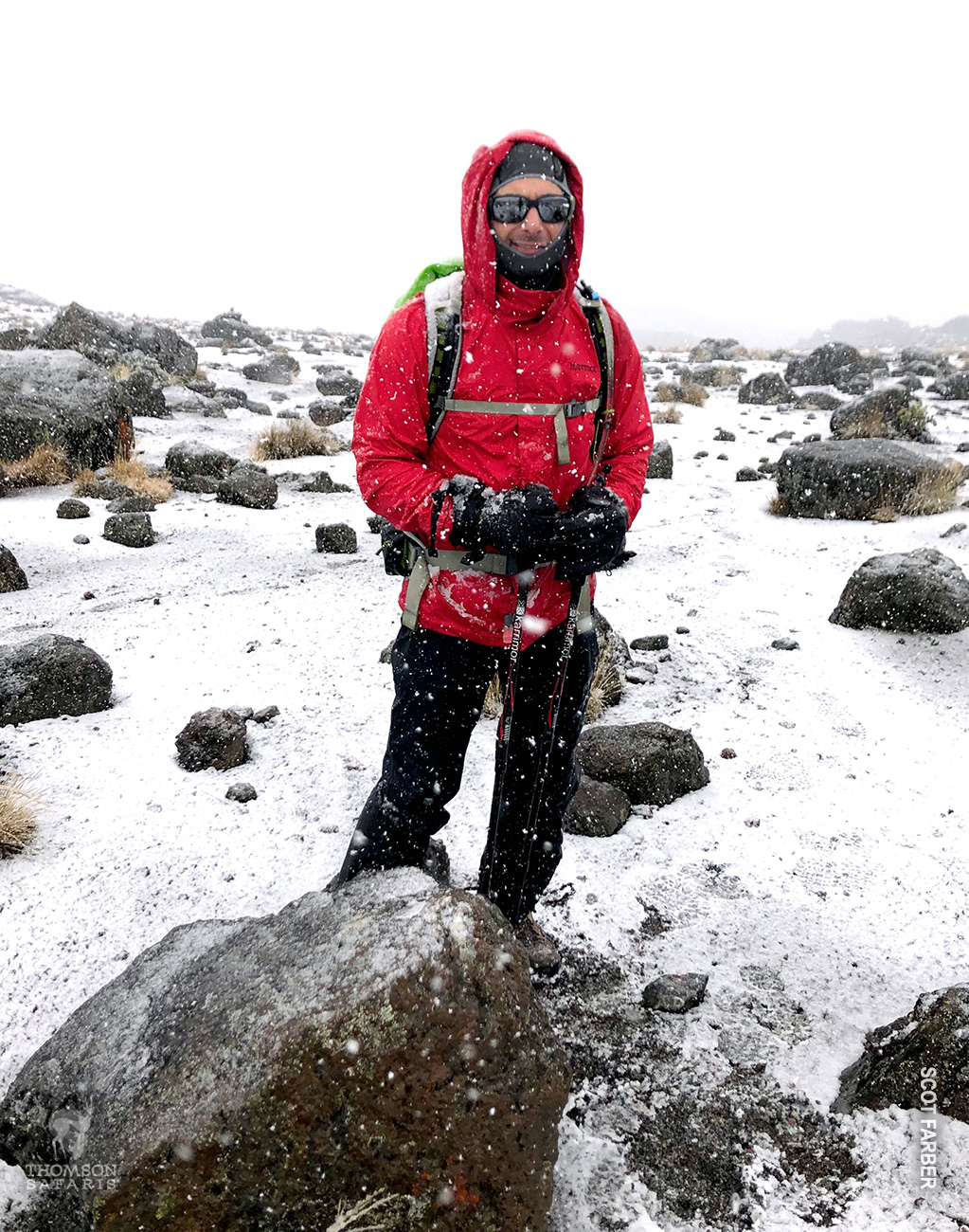
The night before his summit bid, Scot hit a wall. The incline was steep. The windchill was sometimes around seven degrees Fahrenheit. He couldn’t sleep. He felt doubt creeping in. Why was he here? Could he really do this? He knew he needed something to bolster his strength.
That evening, he made a motivational playlist on his phone.
“I realized I needed something to help me through this,” Scot said. “Creating the playlist kept me going.”
The playlist included hits from the “Rocky” movies, including “Burning Heart,” “Going the Distance,” and one of his favorites, “Gonna Fly Now.”
But the trek wasn’t over. Scot got up in the middle of the night (having slept little) to make the final bid for the summit. He trekked on with his playlist and his last reserves of fortitude. As morning came, exhaustion was setting in.
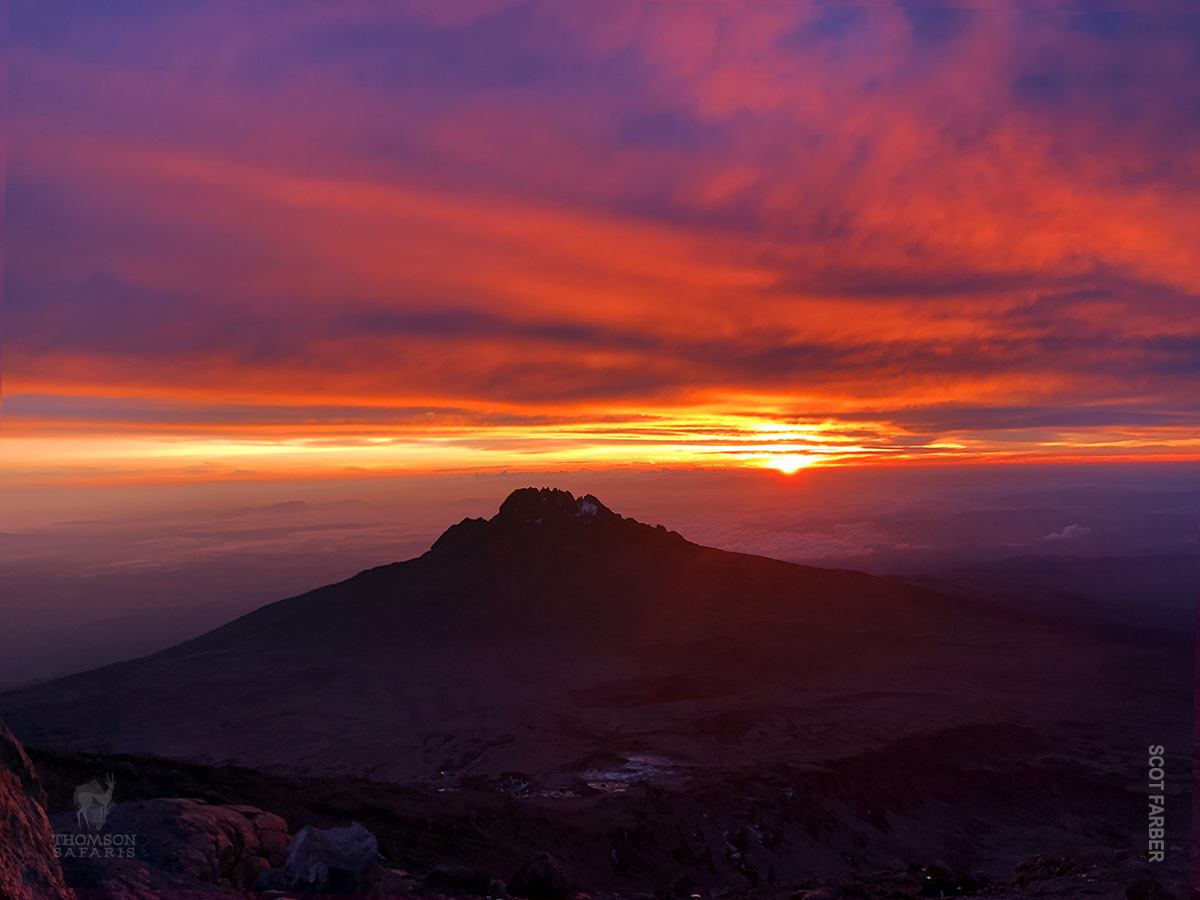
Around 5:30 in the morning, he saw the sunset peeking over the horizon, lighting the sky in purples and reds. He felt so many emotions running through him, helping him gather the strength to continue.
“I love sunrises and sunsets,” he said. “It was a second wind.”
“Gonna Fly Now”
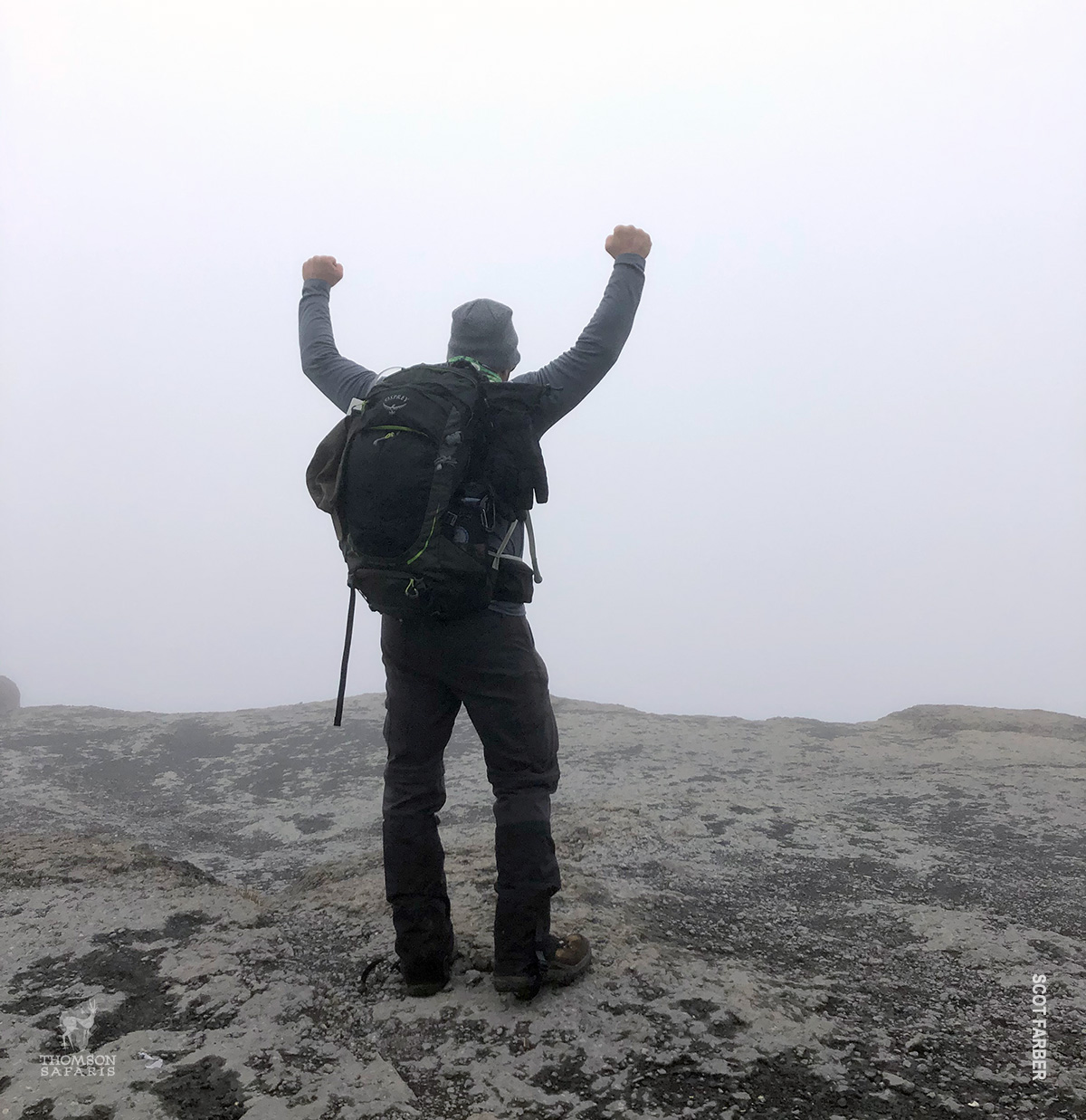
One hundred feet from Uhuru Peak, Scot was climbing very slowly. He had been hiking since midnight. He was battling exhaustion. But as he approached the summit, the “Rocky” theme song came on, and he felt a jolt of energy. With “Gonna Fly Now” powering his movements, he pushed forward and reached Uhuru Peak, successfully summitting Mount Kilimanjaro.
“I got up there, and the emotions started pouring out,” Scot said. “And my arms had to go up in the air, naturally.”
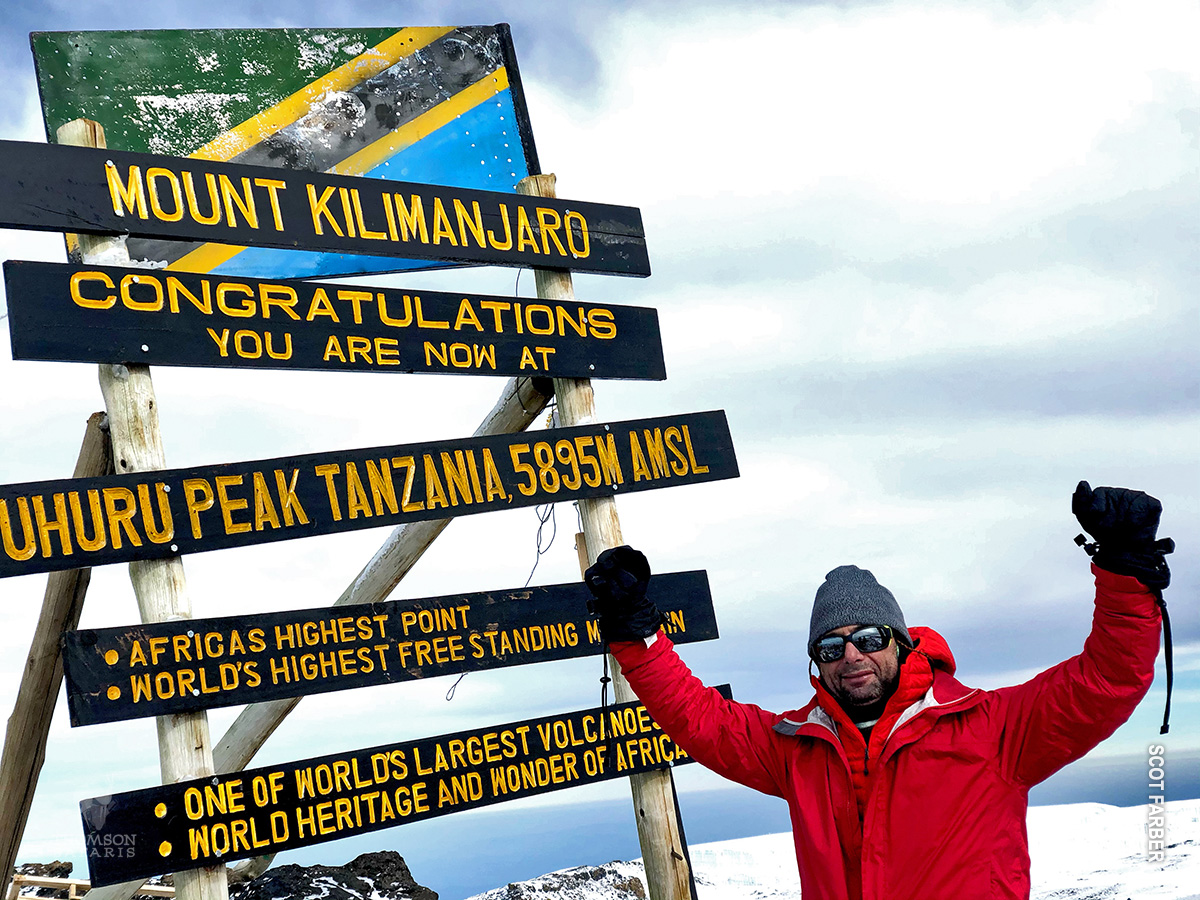
Joy, hugs and a feeling of accomplishment followed. Scot’s Make-A-Wish goal was to raise one dollar for every foot he climbed. He shattered that number, raising 137% of his original target.
“My goal was 19,341, and I’m just shy of $27,000 right now,” Scot said. “With all the crazy stuff going on, it feels great. I’m so glad I did this,” Scot said. “It was the experience of a lifetime.”

Scot is still accepting donations on behalf of Make-A-Wish North Texas until the end of January 2021. You can donate here.

